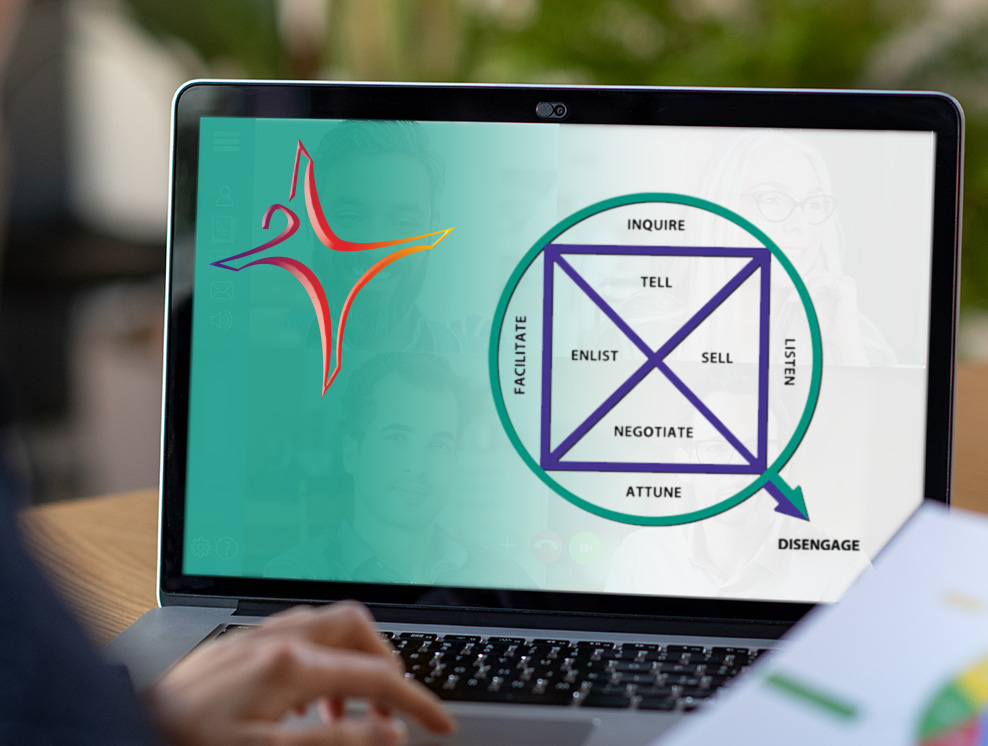
Constructive Debates about Diversity, Inclusion, and Social Justice
By B. Kim Barnes, Barnes & Conti CEO
This article originally appeared on LinkedIn, August 5, 2020

In the next several weeks and months, organizations will be conducting tough conversations about how to respond to the wave of change that has been occurring around the world. It’s no longer enough to delegate issues of diversity and inclusion to an office within Human Resources. It’s no longer sufficient to require eight hours of anti-bias training. Every single leader in every organization is beginning to realize that it’s down to them to take a hard look at policies, practices, attitudes, investments, assumptions, and culture and consider implications for justice and fairness. This will require them to have challenging conversations, to invite critical feedback, to listen to a broad range of voices, to be open to innovative solutions, to break out of their comfort zone.
There is nothing easy or obvious about how to do this. If you’re not yet grappling with it, you may not yet realize how counterintuitive and difficult our responses and actions need to be. Major changes like the one we’re experiencing now seem to happen suddenly, but if we take the longer view, we can see how we got here – first incrementally, thinking we are being responsible and accountable by taking small actions. The volcano slowly builds, the intensity of what’s happening deep within is not in our consciousness. We notice a wisp of smoke here, a small shudder in the ground there. Then all at once it explodes - our world changes from one day to the next. Nothing happened that hasn’t happened before, but now we see it, we feel it – we grasp the larger sense of what it means. We can’t turn away or turn back. We look outward and realize that we also have to look inward. We have to think about it. We have to talk about it.
How we approach these conversations has everything to do with how confident we can be in making decisions and taking actions. It’s not just a matter of logical problem-solving. We need to have robust, open, and constructive debates about how we will change. That means confronting and exploring our past practices, current culture, and future aspirations. Skillful and successful communication about such topics requires several conditions to be present:
- facility with a number of different communication behaviors including expressing ideas, engaging others, exploring views, and challenging positions
- the ability to give, receive, and invite constructive feedback
- a willingness to consider a variety of viewpoints
- a minimum of conflicting vested interests
- an interest in acknowledging, then setting aside, preconceived notions, assumptions, and biases about others
- an issue, problem, or opportunity that participants care about
- a set of agreed-upon norms and a well-designed process for conducting debates and discussions.
The word “debate” implies the airing, even the collision, of different points of view. Many needed debates don’t happen because we fear they will lead to interpersonal conflict. This isn’t inevitable if we choose to have debates that are constructive. Constructive, according to dictionary.com, means “helping to improve, promoting further development or advancement.” Debating in a constructive way means exploring differences of experience, belief, or opinion in order to build or improve something together. It requires us to speak our truth, to listen to and consider that of others, to look for ways to align where we can, and finally to devise solutions that we can all stand behind. We can take a step back from our own experiences and beliefs rather than wearing them. We can be curious about how others arrived at theirs without condemning them. We can leave a space of thoughtful silence between our ideas so that they have a chance to land.
If we are to make any breakthroughs as a society, organization, or community about the enormous issues of fairness and justice that are facing us, we need, of course, to listen to one another. But if we want to move from understanding to action, we must do the further uncomfortable, difficult, but ultimately rewarding work of debating and then deciding and making a commitment to change that would have seemed radical to us just a short time ago.
B. Kim Barnes' most recent book is Building Better Ideas: How Constructive Debate Inspires Courage, Collaboration, and Breakthrough Solutions (Berrett-Koehler, 2019), on which this article is partially based.
Join the conversation on LinkedIn
Kim Co-Authors Article on Consulting for CTDO Magazine
Our ever-prolific author, Kim Barnes, attempts to answer the question: "Is Consulting a Must Have Skill for Trainers?" in an article co-authored with Kimberly Seeger. Kim presents the case for consulting, especially if the skills being taught could effect change at any time.
Kim argues, "So, prepared, and with a solid set of consulting skills, they (trainers) can add value in at least two ways. First, they can help trainees to accept, deal with, and become ready for what the change will require of them. Second, they can communicate to the leadership key issues that arise during any training event or process that may affect the success of the change."
To learn about both perspectives, you'll need to read the article. And please let us know what you think!
Read the article on the ATD Website
October Public Programs Online: Exercising Influence and Intelligent Risk-Taking
Next month, we're offering two of our popular programs in two formats! Both Exercising Influence and Intelligent Risk-Taking will be available either as an introductory webinar, or the same webinar, to be followed up by two 1-1 sessions of one hour each, to be scheduled at your convenience. Here's the information:

Exercising Influence: An Introduction
October 6, 2020
10:00 am – 12:30 pm, PDT
Online Webinar: $435
Online Webinar with Coaching: $1175
Exercising Influence is the most popular influence skills course worldwide. Participants learn new influence skills and behaviors as they work on real-world business situations.
Register for the Webinar with Coaching
Register for the Webinar Only
Intelligent Risk-Taking: An Introduction
October 13, 2020
10:00 am – 12:30 pm, PDT
Online Webinar: $435
Online Webinar with Coaching: $1175
Intelligent Risk-Taking provides a framework for making intelligent decisions about which risks to take and when, and how to adjust the level and impact of risk for your organization.
Register for the Webinar with Coaching
Register for the Webinar Only
Recipe: Buster Holmes' Garlic Baked Chicken
Joel Kleinbaum, Web Developer and Newsletter Editor
Buster Holmes was a legendary restaurateur in New Orleans, famous for serving up huge portions of red beans and rice with cornbread for whatever price customers could afford to pay. Buster Holmes and his restaurant are long gone, but he left a cookbook, and here is my adaptation of one of his signature dishes, Garlic Baked Chicken. (I felt free to adapt it because people in the know say that Buster maybe left out a few things in the cookbook. It happens with all of us who cook without recipes...).

Ingredients:
- 2-3 lbs Chicken parts, cut up (I like to use bone-in thighs, or leg quarters)
- 6-8 cloves garlic (or more), minced
- 3-4 tbsp butter
- 1/3 cup chopped parsley
- 1 tbsp or more Worcestershire sauce
- 2 tbsp your favorite Louisiana hot sauce (or to taste) (I like Crystal brand).
- Salt and pepper
Method:
- Preheat oven to 375 degrees. Season the chicken with salt and pepper to taste. Place in a baking dish, and bake for about 20-25 minutes.
- While the chicken is baking, sauté the garlic in the butter until golden brown, add the parsley, and sauté a bit more. Add the Worcestershire sauce and the hot sauce.
- Pour the mixture over the chicken, and bake until the chicken is done (another 15-20 for 35-45 minutes total baking time).
Buster would have served this with lots of plain rice, cooked with nothing but salt and butter. Servers 4-6
Variation: I like to bake the chicken over a bed of sliced onion. Also, the mixture in step two would be wonderful as a marinade and basting mixture for grilling boneless chicken, or barbecuing (smoke, indirect heat) bone in chicken.
You are receiving these emails from Barnes & Conti because you are a client, colleague, and/or friend of Barnes & Conti Associates or you contacted us through our website, at a trade show, or via social media. Barnes & Conti does not sell, trade, or give away mailing lists or email addresses to anyone. Period. You can read our privacy policy here.
If you no longer wish to receive these bulletins, use this link to unsubscribe or write us at Barnes & Conti, 2342 Shattuck Ave, #217, Berkeley, CA 94704.
*Please don't forward this entire email; the person you forward to might inadvertently unsubscribe you with the above link!